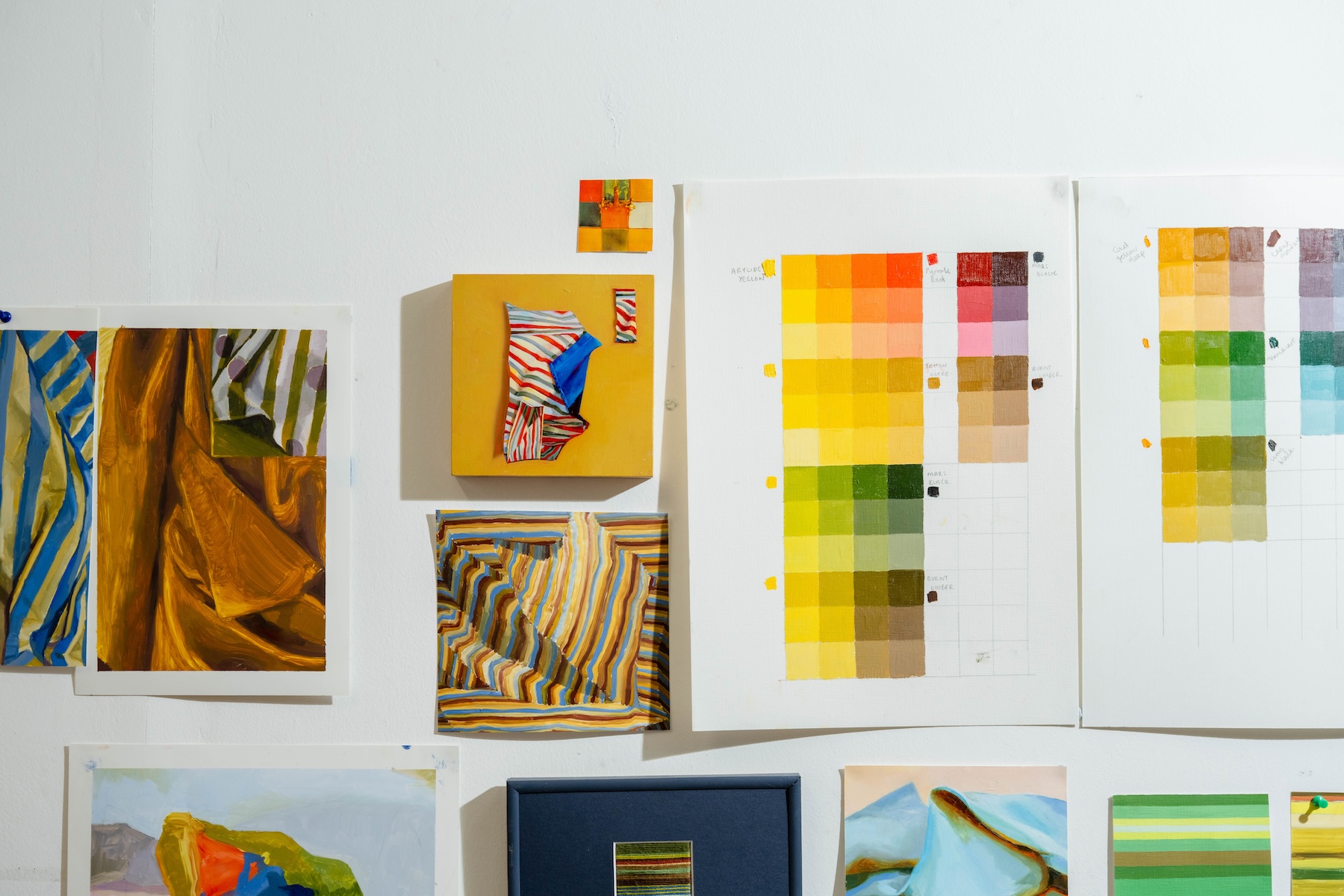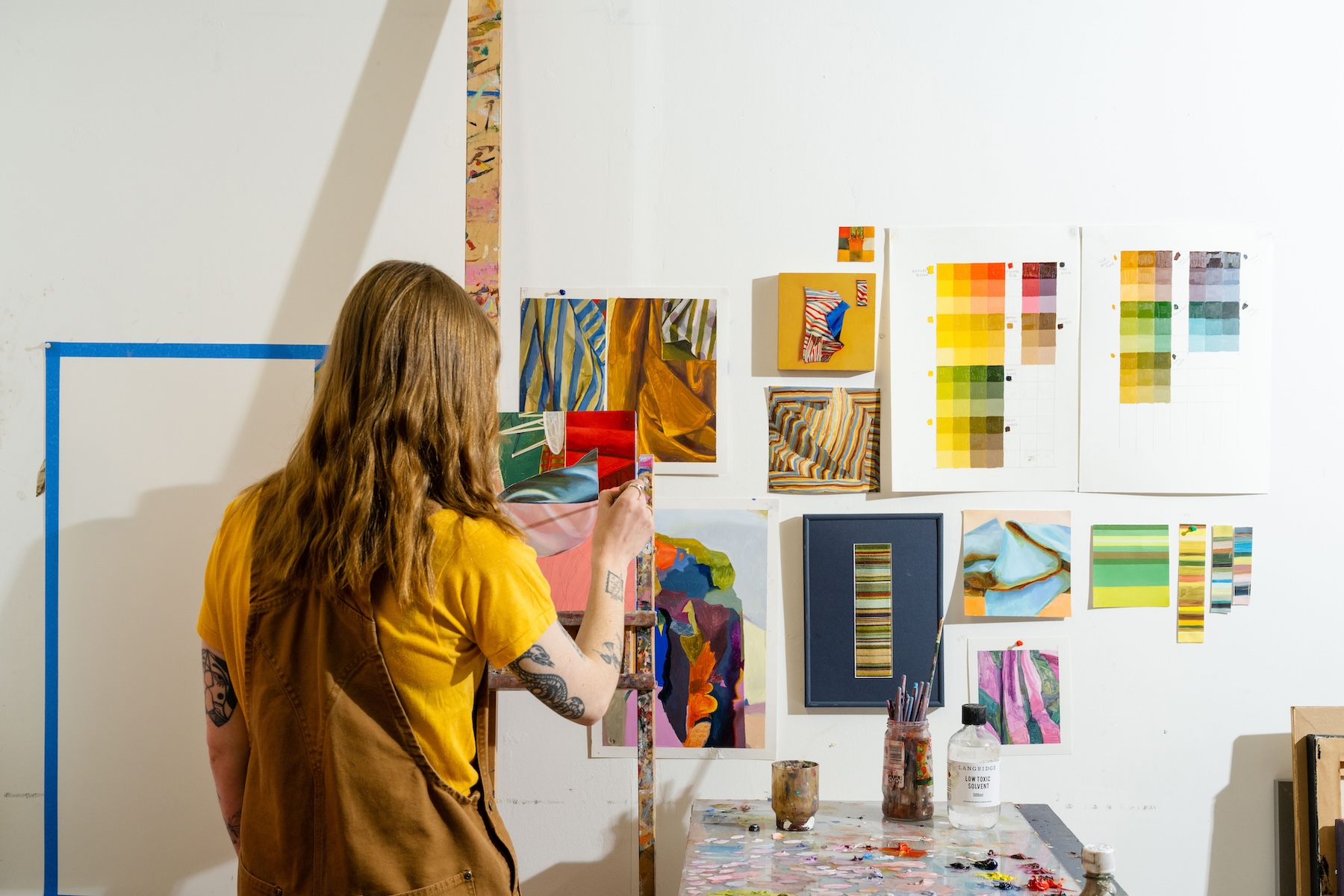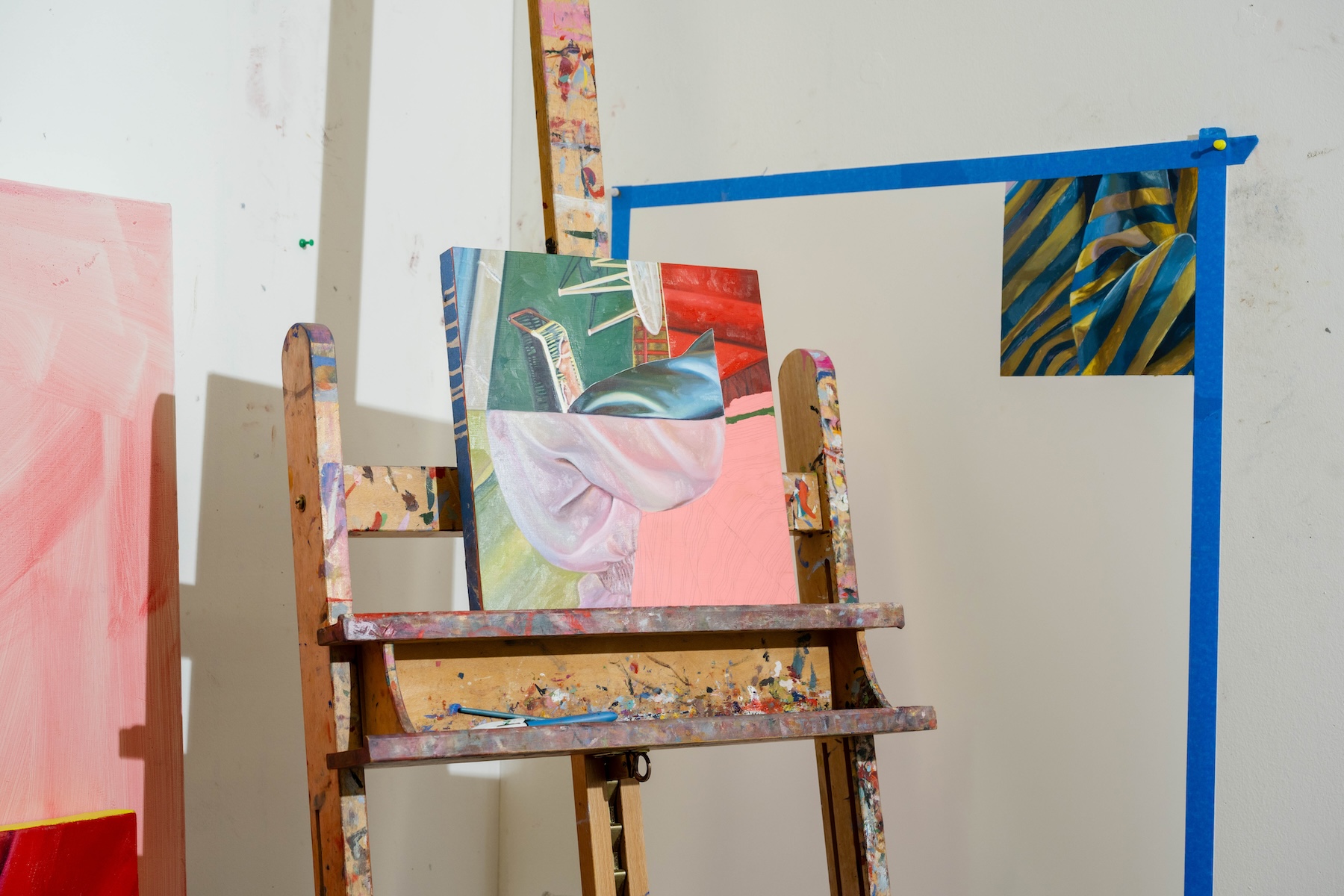In The Studio with Charlotte Tatton
Painter Charlotte Tatton plays with colour and composition from her white-walled corner of Floating Goose Studios on Morphett Street.




“It seems so simple,” Tatton tells InReview. “But I had a studio before that was kind of a mezzanine — so it had no walls.
“So, when I came here, I was like, ‘I can pin things! I can see things! I can drape the fabric on the walls!’”
This blank backdrop is also crucial in allowing her to visualise her work, not only in the context of individual pieces, but as bodies of collected work.
“When I finish a painting, I put it on the wall and I’m like, ‘How would it look in a gallery space? Does it feel lost? Does it feel like it fits the space?’” Tatton says.
“It’s kind of like a mood-board — you just pin things on, take things down, make new things, add colour swatches. If something feels inspiring, I’ll stick it on the wall so it’s always in my view.”

Colour is Tatton’s biggest inspiration, so it’s fitting that she wants to anchor herself in a space that acts as a blank canvas.
“When you start painting, you learn with like a very limited palette — the primaries, warm and cool — you learn every day how to make different colours, tones and hues,” she says.
You might like
“What I like about colour is you could use it to show form, you can show texture — something that’s shiny, you can make something glow — and I think I’m still learning how to use it.”
Domestic objects, retro designs, and vintage fabrics sit at the heart of Tatton’s subject matter, but her practice isn’t limited to painting still life; Tatton also explores the movement of these objects, the space they take up, and how they help create composition.
Tatton can’t quite place her fascination with vintage objects and designs.
“My parents didn’t collect them [vintage items], it’s not like they were around me all the time,” she explains. “It’s not the era that I grew up in, either. I think I’m drawn to the colour of them, those weird browns and greens and oranges and the palettes of those times. They feel quite warm and nostalgic.
“Things were made with so much care and craftsmanship, too, and I feel like we just don’t really have that anymore. I admire people putting in effort in the details.”

Tatton often finds inspiration in old editions of magazines like Women’s Day and Make It Yourself that she has collected over the years.
“It starts with a collage made from stuff I find in these magazines and books,” Tatton says, as she flicks through a sketchbook with cut-outs glued in clusters on every page. These serve as early sketches for the work she will then paint on a canvas.
Tatton has just completed an eight-month Guildhouse Catapult Mentorships with Fran O’Neill, an Australian contemporary abstract oil painter based in New York City. The pair had previously crossed paths when Tatton enrolled in a two-week intensive workshop with The New York Studio School where O’Neill was her lecturer.
“They’re really long, rigorous, hours, with lots of work,” Tatton recalls. “Her [O’Neill] teaching style was amazing — even online I was very engaged, and felt like it just completely switched my way of thinking about colour and composition.”
Subscribe for updates
Tatton says she had more to learn from O’Neill after completing the course, but also felt lost when it came to the direction of her practice. The mentorship was pitched as an opportunity for experimentation, with the hope of having time to learn and play.
“I was in a space where I was like, ‘I don’t know what I’m doing!’,” Tatton says.

“We just started working on limited palettes, using two to three colours, going, ‘What can we make with those?’”
Under O’Neill’s guidance Tatton also started drawing again, something she never previously embraced. It soon helped open up another channel of creativity and possibility.
“She [O’Neill] encouraged me to set the goal of one drawing a day — even if it’s 10 minutes, just sit there and draw something.
“Fran said this was a really easy way to figure out what you want to do and also, just a way to continue to observe the world. It’s like I almost forgot to look around at the world.”
"It’s like I almost forgot to look around at the world."
The mentorship also reignited her curiosity when it came to oil paints; Tatton was able to discover new pigments and learn to mix colours that she had never used before.
“They’re just versatile and have such a richness in colour. And, if you don’t like something, it’s so changeable,” she says.
These discoveries have also helped her re-evaluate her own identity as an artist.
“I was learning that I can do multiple things,” Tatton says. “I was quite locked into this style for a long time, but then Fran was like, ‘Well, you could be more abstract, or you could draw. or you can just paint sections of fabric – you can do it all!’ which was quite freeing.
“I don’t want to pigeonhole myself, and there’s different sides for my practice, which I want to explore.”
What better place for Tatton to explore than in her white-walled studio, surrounded by all the things that inspire her?
In the Studio is a regular series presented by InReview in partnership with not-for-profit organisation Guildhouse. Follow Charlotte Tatton’s practice on her website. More information about the Catapult mentorship program can be found here.

